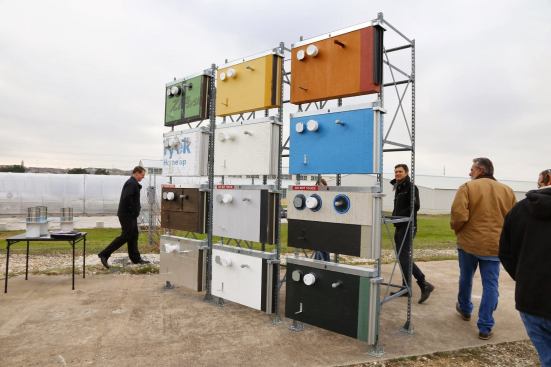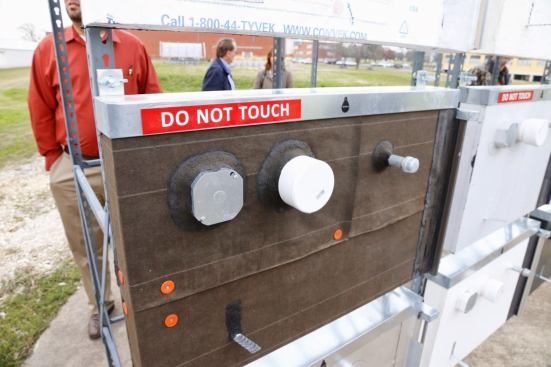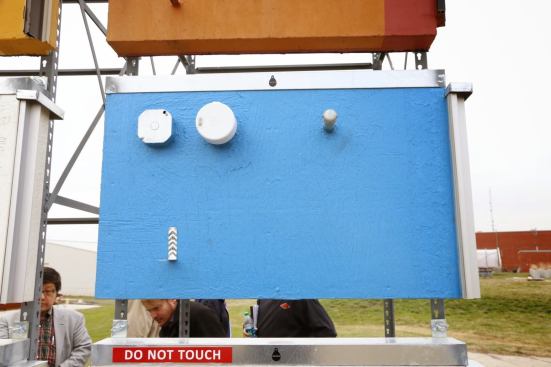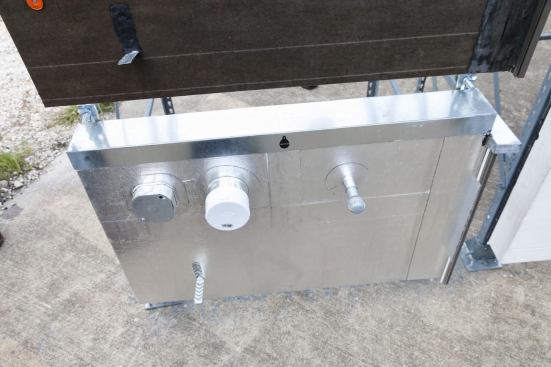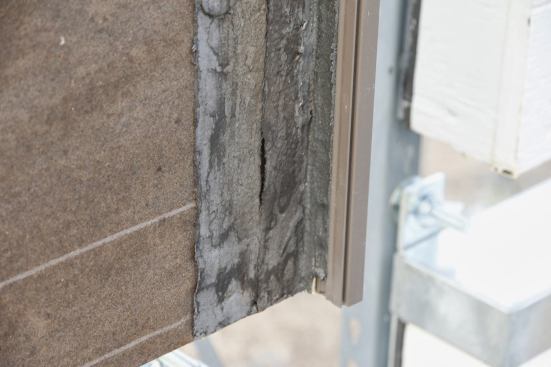I’ve been involved recently with the Austin AIA Chapter’s Building Enclosure Council (a Building Science group), and they had a great seminar today at the University of Texas JJ Pickle Research center. The seminar was mainly given by David Nicastro, PE (with Building Diagnostics ) where they gave an overview of a joint private/public research project about the durability of Stucco and the related assemblies behind Stucco facades. David and his associates (a group of Engineers & Consultants) do all kinds of cool things in their work including diagnosing building failures/issues related to waterproofing, expert witness & litigation consulting, and plan reviews to ensure buildings will work well from the start. The main focus of the seminar I thought was going to be stucco related, but it turns out I found their research into durability of WRB’s (weather resistive barriers, ie Tyvek, Tar Paper, Fluid Applied Prosoco, etc) fascinating. I took 4 pages of notes today and it was a tough 4 hour presentation to boil down; here’s my highlights then I’ll get into some test rack photo’s which is what I was REALLY excited to see at the end of the presentation.
NOTES
Durability is the essence of sustainability: Reduce waste and keep building materials out of landfill longer and select product with longest service life.
Durability Concepts:
- Average Expected Useful Life
- Whole Building Design Life
- Institutional Buildings – Should last over 100 years
- Commercial Building / Residential Buildings 60 years???? No definition
- Products Design Life – Env Life Cycle
Types of Building Materials:
- Permanent – (e.g., Glass)
- Maintainable (masonry)
- Replaceable (roof)
You can have durability issues in all these categories!
Design Life vs Service Life:
- Average Commercial Roof Design Life = 15 years
- Service Life = Actual Duration Affected by many variables: Design/use, Product Quality, Climate
- If Service Life = Design Life then Normal Duration = Durable! The only thing that matters is your expectation of longevity.
Primer for Durability: (Caulks/Peel&Sticks – Many products say they are primerless)
- Better adhesion w/Primer Priming Improves Durability!
- Solvents in primers clean the substrate
- Binds Debris in the surface to be adhered.
- In General: If you can use a primer, YOU SHOULD USE A PRIMER!
Clear Sealant isn’t suited for Construction (talking about silicone). But it’s the most common sealant! Different chemistry to make it clear, needs color to make it durable. Also, Sealant needs a gap to work! Tight gap, no sealant will actually seal. You see this all over in Construction.
Sealant Durability improved by:
- Priming
- Premium Product
- Trained Installers
Building Envelopes: The four barriers (interesting to note they didn’t list this in order of importance like Joe Lstiburek does. I ordered my notes in the correct order of importance)
- Water Resistive Barrier
- WRB Air Barrier
- Vapor Barrier
- Heat Barrier (Thermal)
NO vapor barrier at all in the wall section for our climate greatly enhances durability! (I’ve seen this mistake in many remodels where they used Polyethylene (plastic) sheeting behind sheetrock for a “code mandated” vapor barrier in the 90’s.
Changing topics now to the durability racks outside and WRB’s.
- Many new Liquid-Applied WRB’s on the market today. Crowded Market! Some products will die. Survivors will likely:
- Permit long UV exposure (1 year +)
- A decade from now we won’t see products that only have short UV time (short meaning less than 3-6 months)
- We are interested in products that last 6 mo or longer
- Want ones that self seal fasteners! -Have low total system costs
- How many components does the system take?
- How easy was it to use?
- Are the instructions ok?
- How long can it be exposed?
- Ho does it work on Typical Details?
- How durable is it?
- There is no standard for sealing nail holes in WRB’s
- Water + Heat is extremely damaging to WRB’s in real life.
Risinger Homes is a custom builder and whole house remodeling contractor that specializes in Architect driven and fine craftsmanship work. We utilize an in-house carpentry staff and the latest building science research to build dramatically more efficient, healthy and durable homes. Be sure to check out my video blog on YouTube, and follow me on Twitter @MattRisinger
